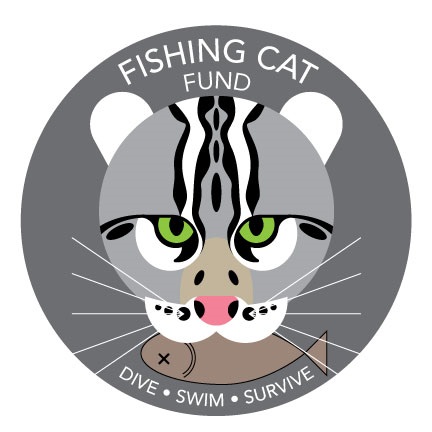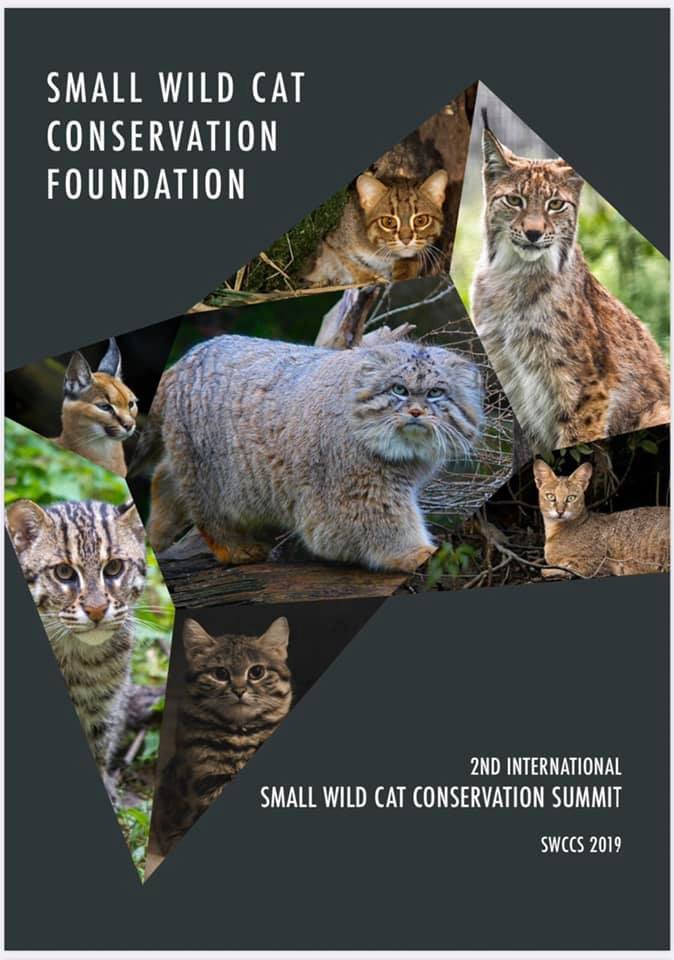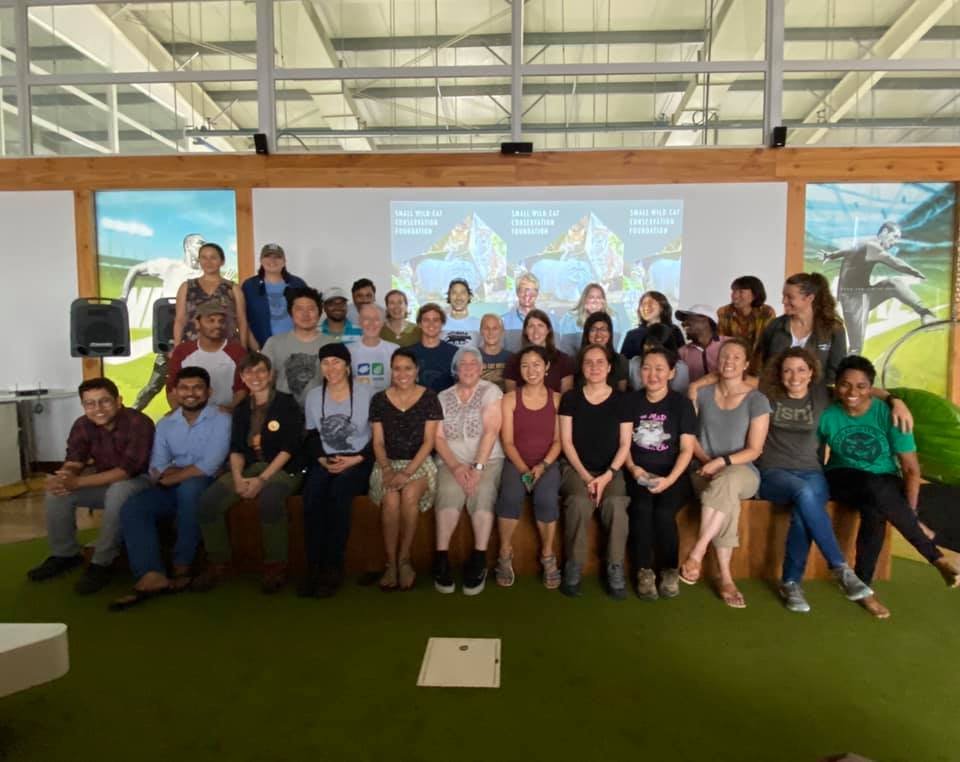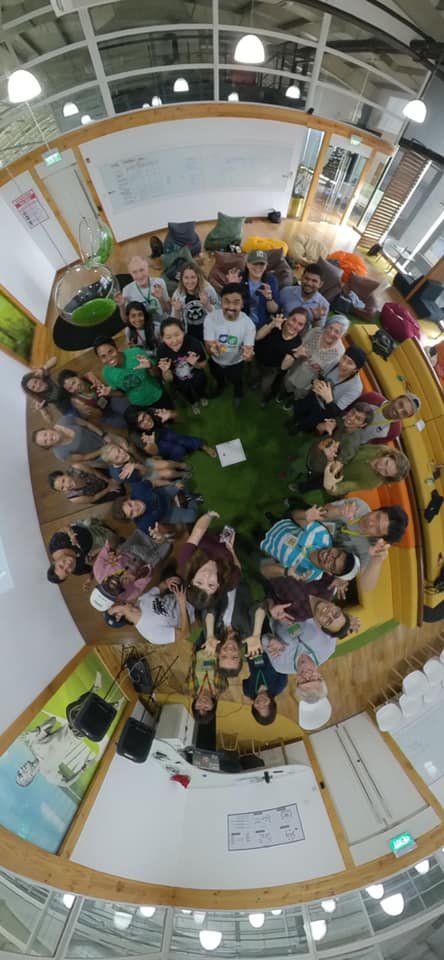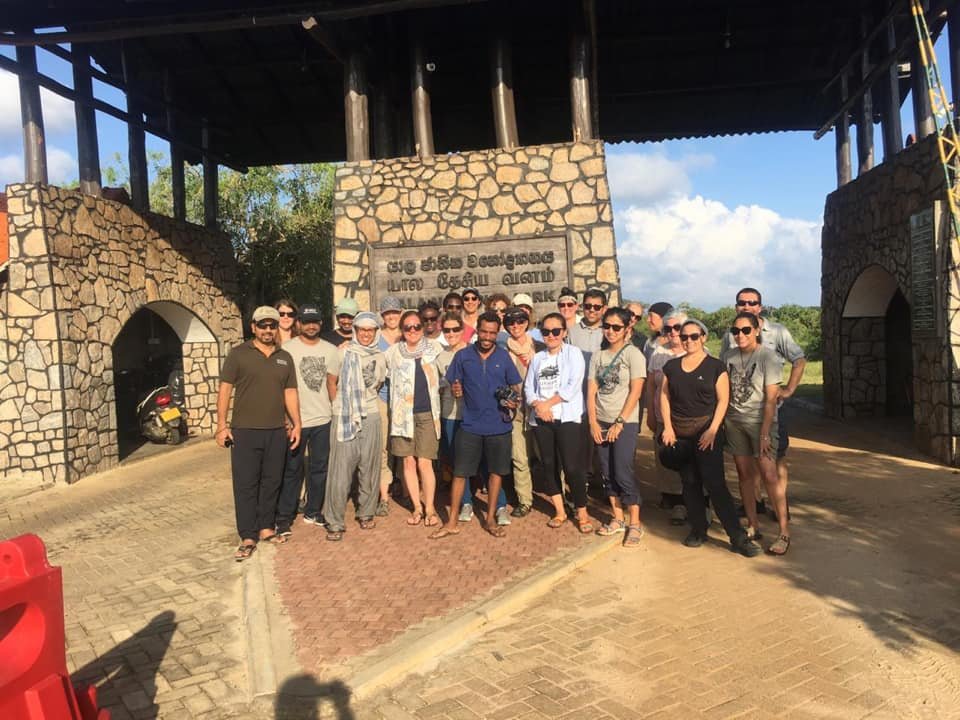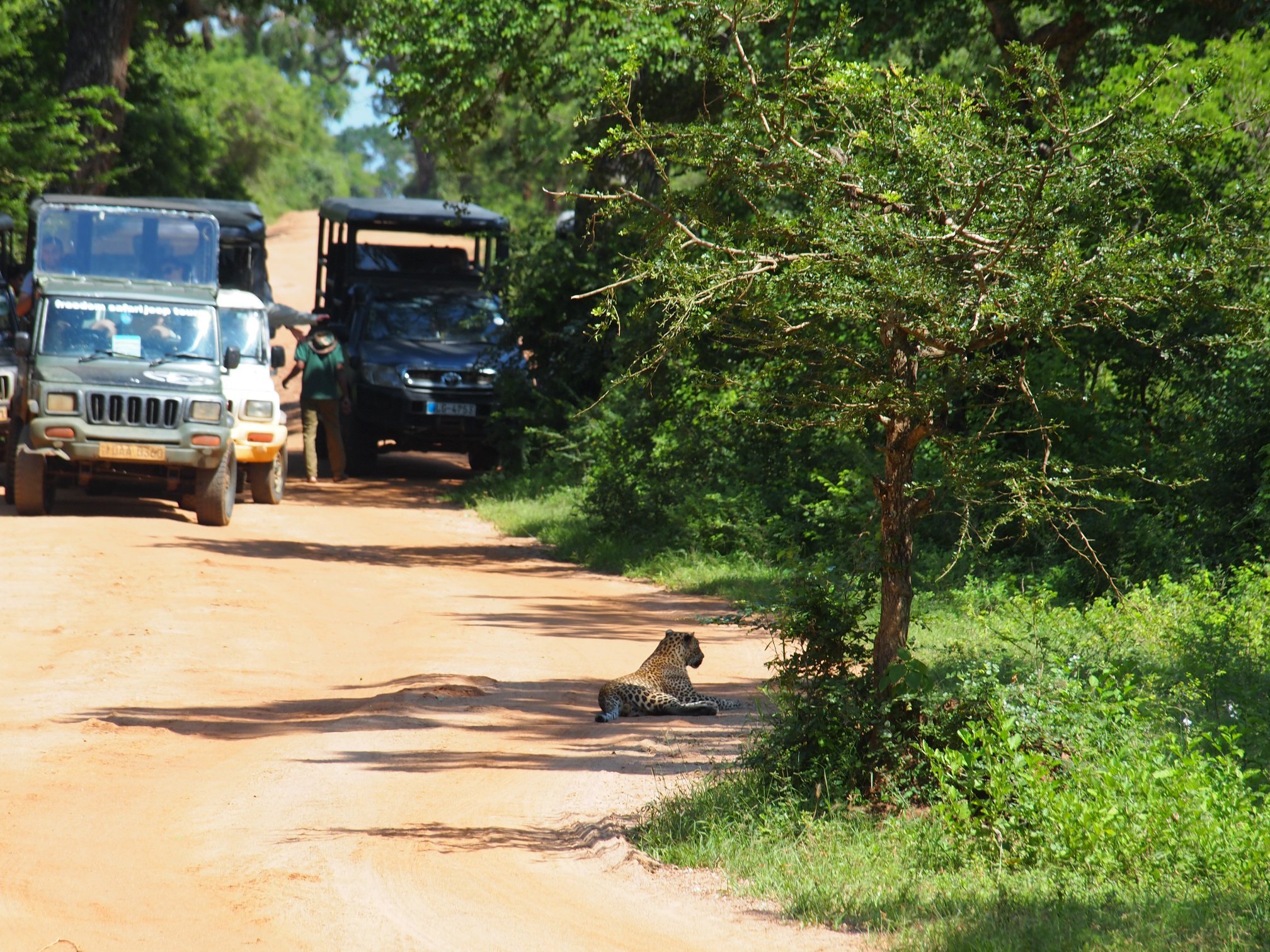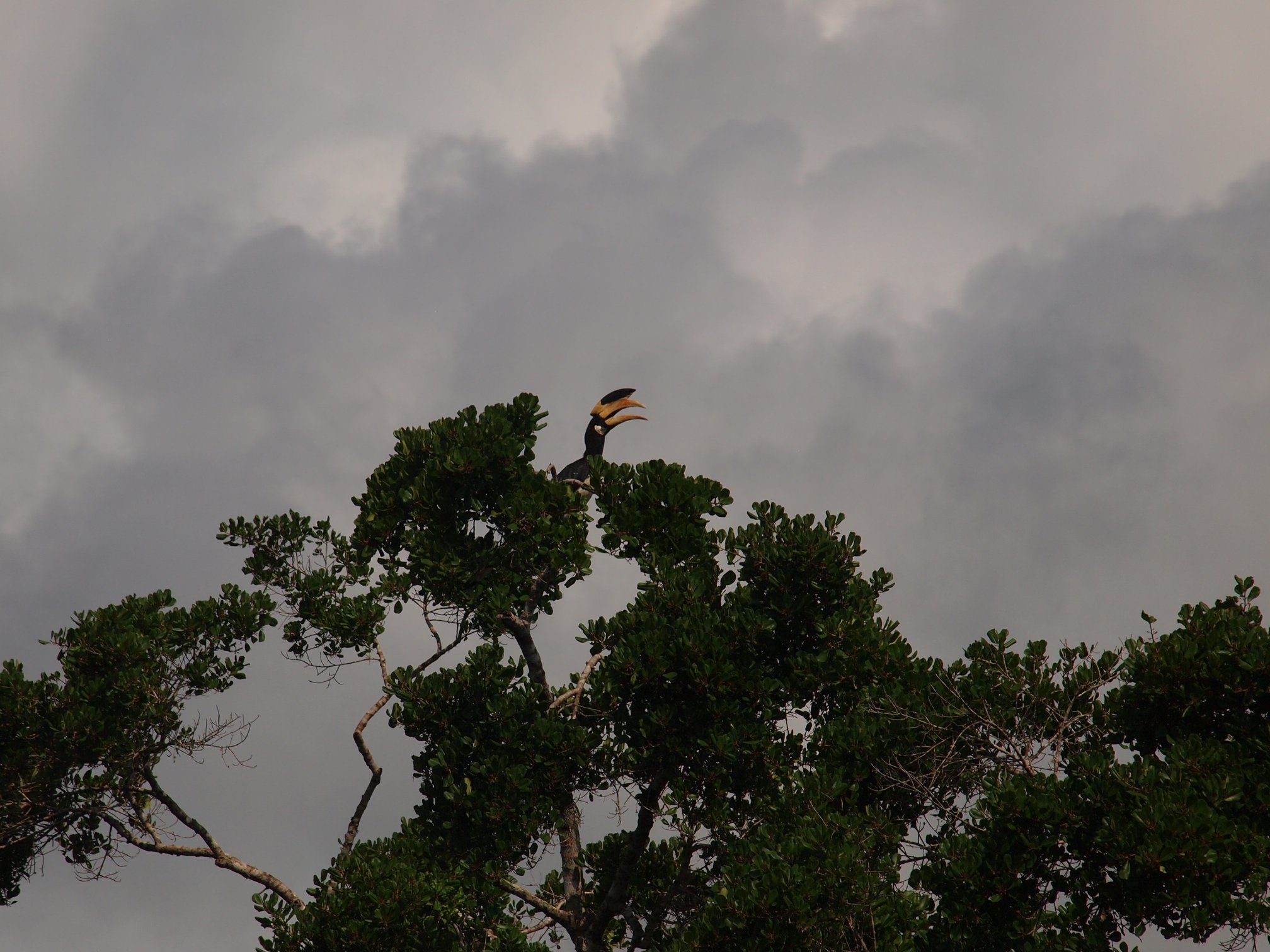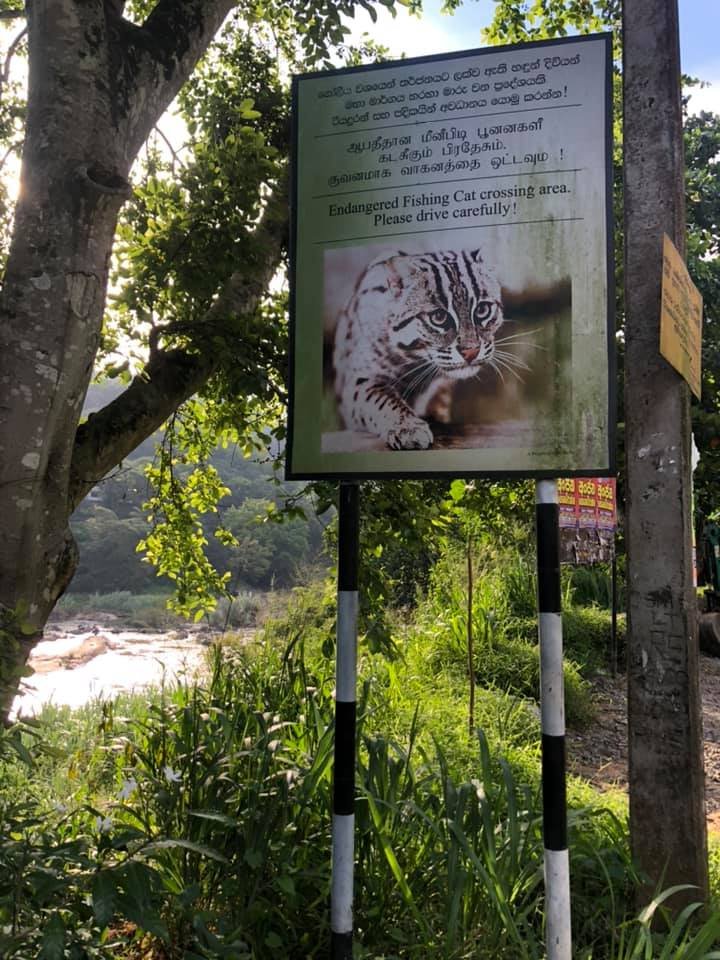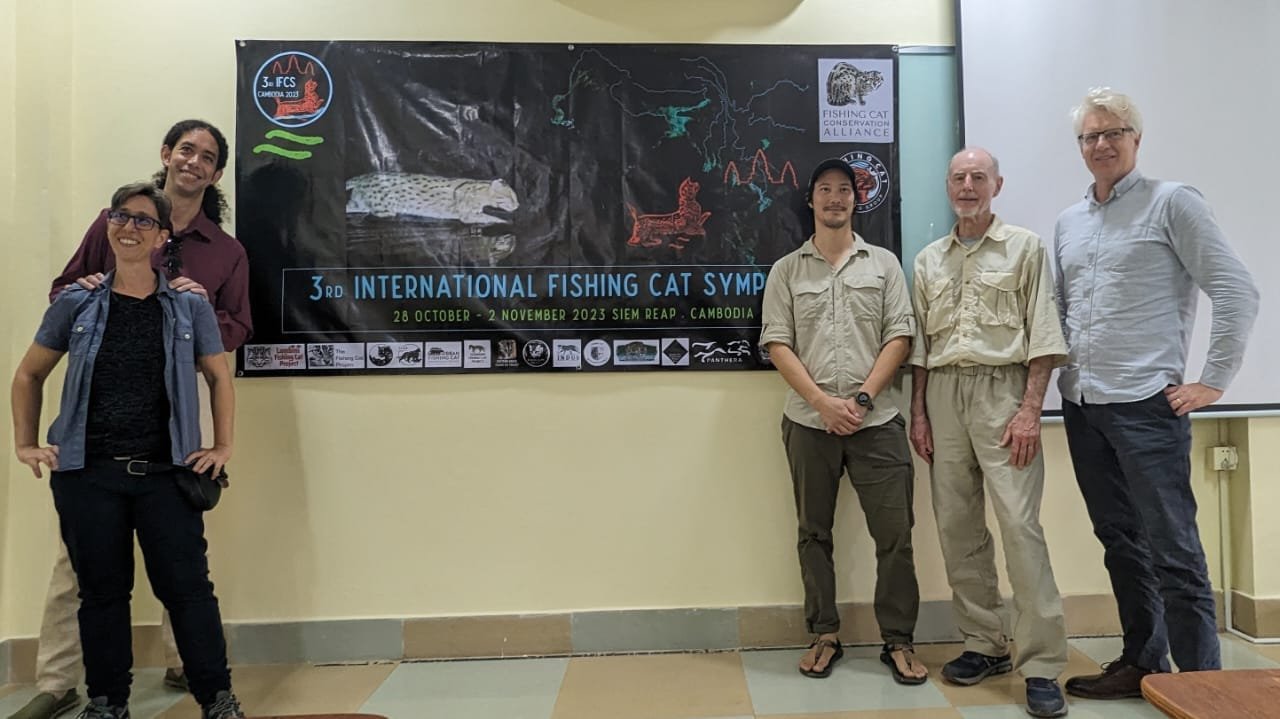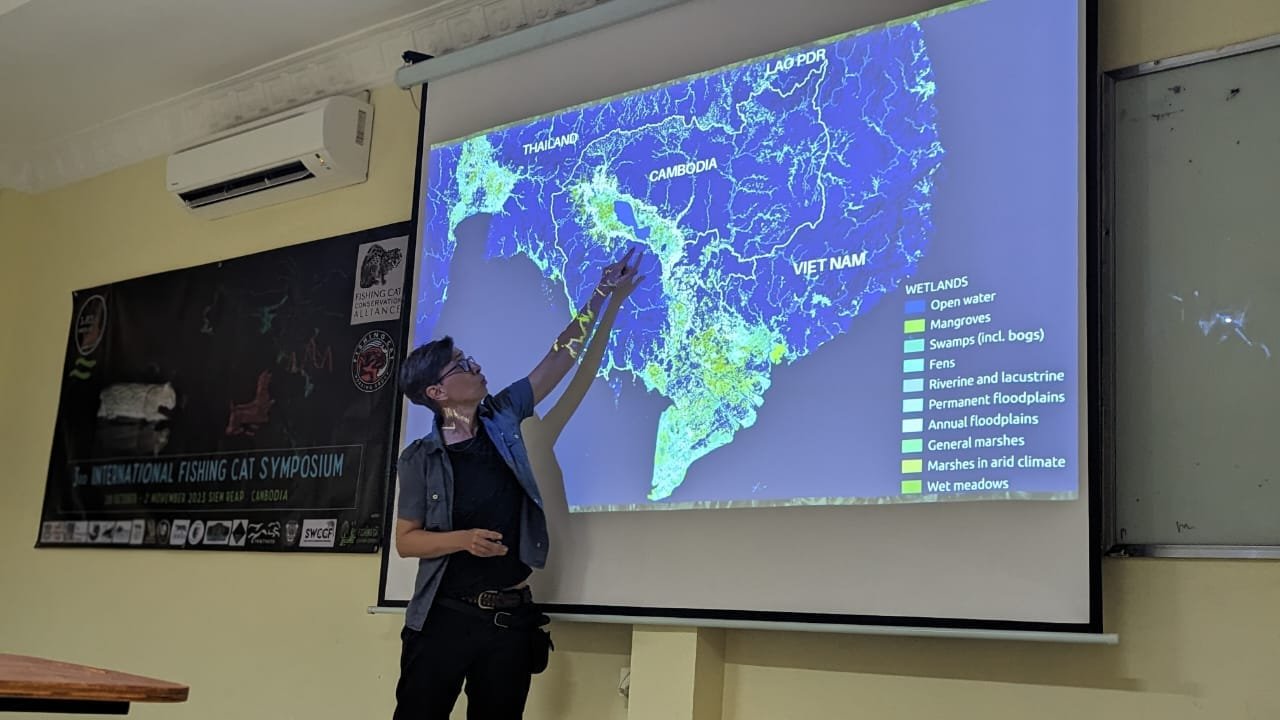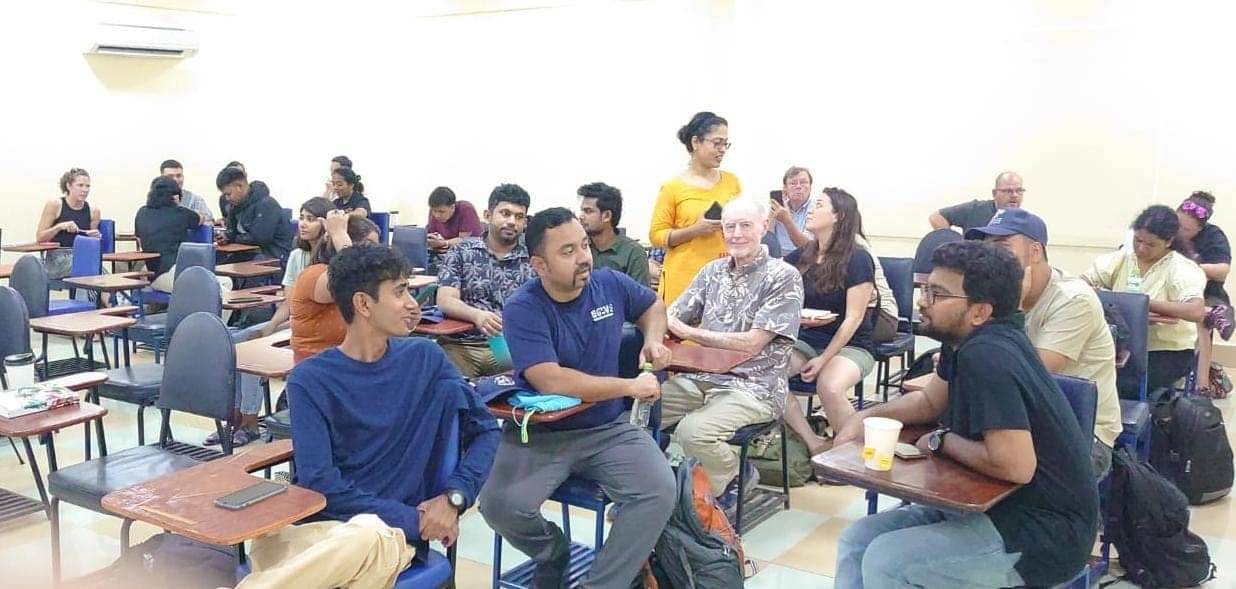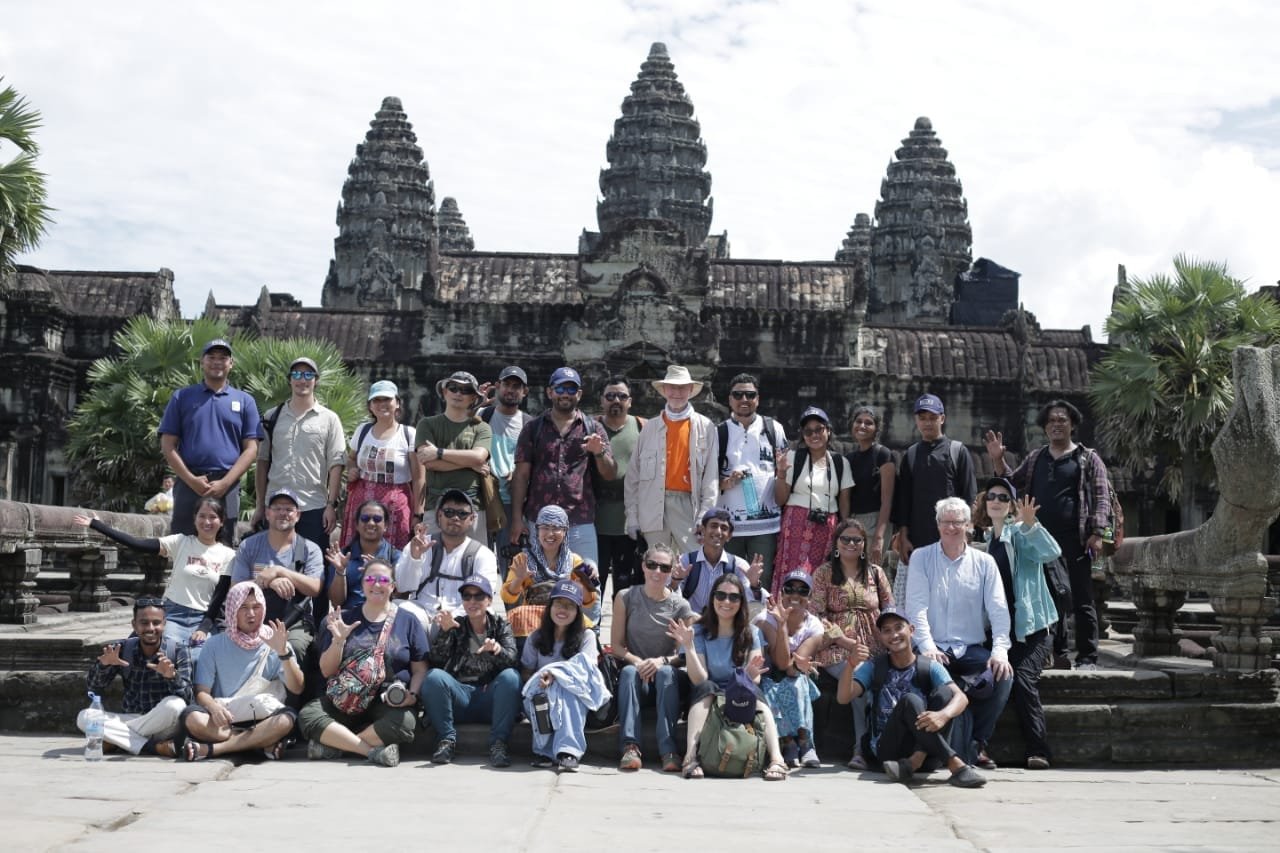INTERNATIONAL FISHING CAT MEETINGS
The Fishing Cat Fund has been proud to support international fishing cat meetings since 2015. Funds raised to support meetings go to offset costs for the conservationists attending and/or meeting logistics. Our goal is to help alleviate travel, room and board costs so that all fishing cat conservationists can gather, collaborate and share best practices for the research and conservation of the species. We have supported meetings in Nepal (2015), Borneo (2018), Sri Lanka (2019) and Cambodia (2023).
1st FISHING CAT SYMPOSIUM, NEPAL 2015
In November 2015 fishing cat conservationists gathered from around the world to participate in the first ever Fishing Cat Symposium in southern Nepal. The symposium was organized by the Fishing Cat Working Group (http://www.fishing-cat.wild-cat.org/) and was sponsored by various conservation organizations (like the Fishing Cat Fund!). I was fortunate enough to be able to make the journey to Nepal to deliver funds raised by the Fishing Cat Fund and present the status of the fishing cat population in North America. My goal was also to see where we could play a role in the global conservation of the fishing cat.
Originally the symposium was supposed to be held in May. Plans were made, plane tickets were purchased but on April 25th a 7.8 earthquake struck Nepal, killing thousands of people and causing destruction across the nation. The symposium had to be postponed. Organizers still wanted the symposium to be held in Nepal, especially after the earthquake when the nation needed support, so it was moved to November.
I arrived in Nepal a week before the symposium, to help out with last minute symposium errands and also to see the sights around Kathmandu. Kathmandu is a fast paced and colorful city. The motion and energy of the city is hard to describe on paper and through static pictures but I managed to capture an image that came close to the real thing while riding a rickshaw in the busy tourist area of Thamel.
November falls in the busy travel season for Nepal and it was clear that work had been put into the city to clean up the destruction of the earthquake. There were some remnants of the destruction, mostly seen by wooden braces that were leaning up against buildings to help them maintain their structural integrity. In some areas, like this museum in Durbar Square, Patan, construction is still underway to return monuments back to their original form.
While I enjoyed my time in Kathmandu, as an animal lover I had to go explore the natural side of Nepal. Many moons ago the Cincinnati Zoo (where I work) had a Greater one horned rhino (also called an Indian rhino) named “Chitwan”. Being so close to Chitwan National Park I could not pass the opportunity to possibly see an Indian rhino, and maybe a tiger or even a fishing cat! I made the journey from Kathmandu to Sauraha (just outside Chitwan National Park) on a tourist bus. I spent three days going into and out of the national park to explore, each time crossing a river via canoe to enter and exit the park.
Chitwan National Park was an amazing adventure. The rhino population is doing quite well in Chitwan, they do not face the same poaching issues as the rhinos in Africa, and despite the heavy vegetation of the jungle they are commonly seen around the park. During my three days in Chitwan I was fortunate enough to see three rhinos! My first rhino was feasting on plants in a lake.
After my time in Chitwan National Park I met up with the conservationists to travel to the symposium location, a resort on the other side of the Narayani River from Chitwan National Park. Conservationists had come from fishing cat range countries including Nepal, India, Sri Lanka, Cambodia and Bangladesh, and others from USA, UK, Spain and Germany. Most people have no idea what a fishing cat is so it was exciting to be in a room of fishing cat experts and enthusiasts.
The first day was a day for presentations and each participant gave an update on the status of their fishing cat population, habitat and project. I learned that while we generally say that the fishing cat’s range is “Southeast Asia” we really are learning that the range can include any of the southern tropical Asian countries. Some Southeast Asian countries have little traces of fishing cats and some outside of Southeast Asia have populations that are healthy and thriving. The dense habitats that fishing cats may inhabit, as well as their elusive nature, makes determining their population quite a challenge. Pictured to the right is Sagar Dahal of the Small Mammals Conservation and Research Foundation presenting his status of the fishing cat in Nepal.
The next two days centered on strategic planning. Participants brainstormed the various threats across the fishing cats range and what they think are the main issues hindering conservation of this species. Here is where the real challenge began. Conservation of any species is a multi- faceted issue. In many range countries the fishing cats compete with people for food sources (fish) and in other countries people depend on the fishing cat habitat (mangrove forests) for firewood to heat their homes and cook their food. How do you prioritize who needs a resource more? How do you approach a local community who may be struggling to subsist and get them on board with conservation of an animal that they may perceive as a threat? These are the same questions that any conservationist must answer. Fishing cats face the same threats as many other carnivore populations- habitat loss to agriculture, urbanization or industrialization, human- carnivore conflicts, poaching for meat or medicinal products, retaliatory killings, collisions with cars and habitat fragmentation.
Three groups formed to take these topics- one focusing on ecological knowledge, the second on socio-cultural themes and the last on policy issues. I joined the ecological knowledge group and we began by identifying all the threats to fishing cats.
In the end each group formed objectives to add to the larger Strategic Plan. Symposium participants agreed to the objectives and assigned themselves a contributing role to any objectives where they can make a positive impact. We pledged to implement the Strategic Plan and reconvene in 5 years to evaluate our progress. The area where I feel that we can make the greatest contribution is to increase the global education and understanding of fishing cats. Our first goal is to work with the conservationists to create multilingual literature that highlights the habitat and conservation of the fishing cat. We hope to create a children’s book that can be translated into the various languages of fishing cat range countries.
After all the work that was done it was time to enjoy the jungle. We crossed the river from our resort into one of the small islands that is on the outskirts of the Chitwan National Park.
We trekked through the jungle (filled with leeches I might add!) on the search for local wildlife. Mostly I just saw leeches but the jungle teemed with potential. In addition to fishing cats Chitwan National Park is also home to jungle cat, leopard cat, clouded leopard, leopard and tiger. So many cats!
While we did not see any cats we found these very clear tiger tracks along the river. We had been warned that a man eating tigress inhabits the area so there was some apprehension about seeing proof that she has been around the area recently.
While our jungle trek did not yield much wildlife it gave the conservationists another opportunity to spend time together and discuss best practices in the field and among their communities. Connections were made, contacts exchanged and friendships created bound with the common love of fishing cats.
Twenty six participants spanning nine countries from three continents met in Nepal with a common goal, to save the endangered fishing cat. It was a rare privilege to participate in the process, to see the inner workings of a conservation planning organization and to be included in a Strategic Plan designed to take action to save a species.
I had an amazing journey to Nepal and my last moment of awe came on the airplane as I was leaving the country. The Himalayas appeared on my side of the plane reminding me once again that we live in a dynamic world filled with beauty and wonder, a world worth conserving. It was a personal sacrifice to attend the meeting, covering my own costs and taking time off my day job, but I am so glad that I was able to connect face to face with the folks working hard to save the fishing cat!
-Linda Castaneda, Fishing Cat Fund founder
2nd INTERNATIONAL SMALL WILD CAT SUMMIT, SRI LANKA 2019
Fishing cat conservationists gathered at the Small Wild Cat Summit in Sri Lanka in 2019. The meeting included other small wild cat conservationists and gave everyone the chance to share best practices in research and conservation, as well as build collaborative relationships across countries and species.
I was once again fortunate to be able to fund my way and take time off my day job to attend the meeting. I was able to give updates about the North American fishing cat population within zoos, as well as how the Fishing Cat Fund is working to help keep fishing cats in wild spaces and places. After the meeting was over in Colombo, participants who could stay were able to explore southern Sri Lanka. In addition to visiting Yala National Park to see some iconic Sri Lankan species (like leopards and hornbills!), we were also able to visit one of the fishing cat research sites. While we did not see a fishing cat during our time there, Giridhar Malla was proud to show us his road signage that encourages locals to slow down for fishing cats crossing the busy road.
It was a dynamic experience to hear how fishing cat projects had grown since the last meeting and to continue to be a part of saving this amazing species.
- Linda Castaneda, Fishing Cat Fund founder
3rd INTERNATIONAL FISHING CAT SYMPOSIUM, CAMBODIA 2023
Fishing Cat Fund was pleased to support the 3rd International Fishing Cat Meeting in Cambodia in November 2023. While we were not able to attend the meeting in person this time, we heard many reports of the great updates and discussions that occurred during the symposium!
